Safe Practices for Wintertime Fireplace Use
You’ll enjoy your fireplace a lot more this winter by following a few wise safe practices than you will if you ignore your fireplace and chimney and hope for the best.
Here are the essentials.
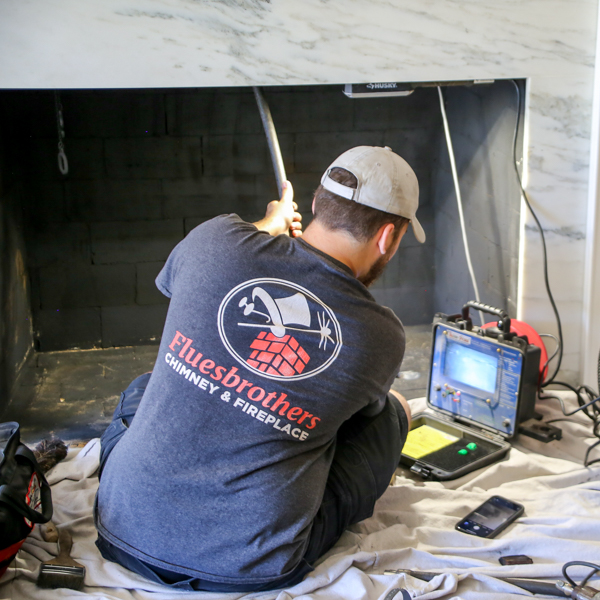 Have your chimney inspected
Have your chimney inspected
A licensed chimney inspector will look over your chimney and fireplace to make sure they’re ready for heavy use. Areas of a basic inspection likely will include:
- Bricks and mortar (chimney masonry)
- Firebox
- Fireplace damper
- Chimney cap
- Chimney crown
- Chimney flashing
- Drafting efficiency
- Flue buildups/obstructions
If anything is found that could lead to unsafe or inefficient operation, your inspector will alert you to it. Most chimney inspectors provide repair and component-replacement services.
Have your chimney cleaned
If it’s been more than a year since the chimney for your wood fireplace has been professionally cleaned, make sure you arrange for this service before firing up the fireplace.
The best practice is to schedule annual chimney cleanings once a year, on or around the same date of the previous inspection.
Chimney cleaning (also called chimney sweeping) involves the use of specialized brushes, scrubbers and whips to dislodge and remove built-up creosote and soot from your chimney flue. Creosote is highly flammable and causes most chimney fires in the U.S. each year.
Your technician also will remove tree debris, the nests of small animals and other flue obstructions that could cause smoke and deadly carbon monoxide to back up into your home.
Operate your fireplace safely and correctly
Just because it’s called a “fire”-place doesn’t mean it’s supposed to be used for any kind of fire. Here are some guidelines:
Burn only firewood
Never burn furniture pieces, packaging materials, pressed board, clothing, magazines, household garbage or any other “foreign” material. These materials can burn way too hot and create way too much smoke.
Burn dry wood
Seasoned firewood has had at least six months to dry out. Damp wood is very smoky, which contributes to more creosote in your chimney.
Start fires with matches and kindling
Do not use accelerants like lighter fluid or charcoal starters to get fires going. These toxic substances can send dangerous fumes into your home, and they can flare up and put your fireplace/chimney system at risk.
Keep smoke and CO alarms in place
Smoke detectors and carbon monoxide monitors are very important if you operate a fireplace. Smoke detectors should be placed throughout the home. A CO monitor should be placed on a wall near the fireplace and higher than the firebox.
Never leave home with a fire burning
This goes without saying, but one more reminder won’t hurt. You cannot control a fire when you’re gone. In addition, if you have small children or playful pets, it’s a good idea to never leave them unattended when your fireplace is running.
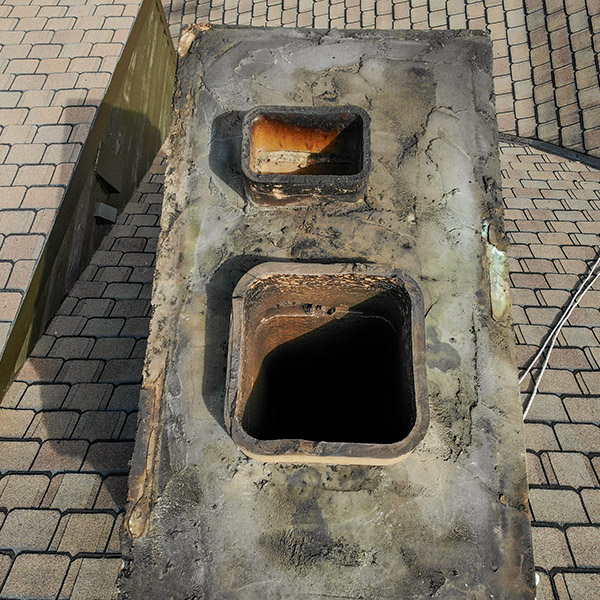 What to do if there’s a chimney fire
What to do if there’s a chimney fire
These are common signs a chimney fire has occurred:
- Rumbling sounds like from a faraway train
- Clicking or tapping noises
- Large amounts of dark smoke coming from either end of your chimney
If you notice any of these signs, call 911 immediately – don’t try to solve the problem on your own. Then put out the fire in the fireplace if it’s safe to do so. When the emergency is resolved, bring out a chimney inspector.
Safe wintertime fireplace use starts with expert help
Fluesbrothers Chimney & Fireplace of Kansas City, KS, is here to help keep your fireplace/chimney system running safely and efficiently all winter long. We provide licensed chimney inspection, chimney cleaning and all types of repair and rebuilding work.
Get your questions answered or schedule an appointment by calling (913) 236-7141.
The post Safe Practices for Wintertime Fireplace Use appeared first on Fluesbrothers Chimney Service.
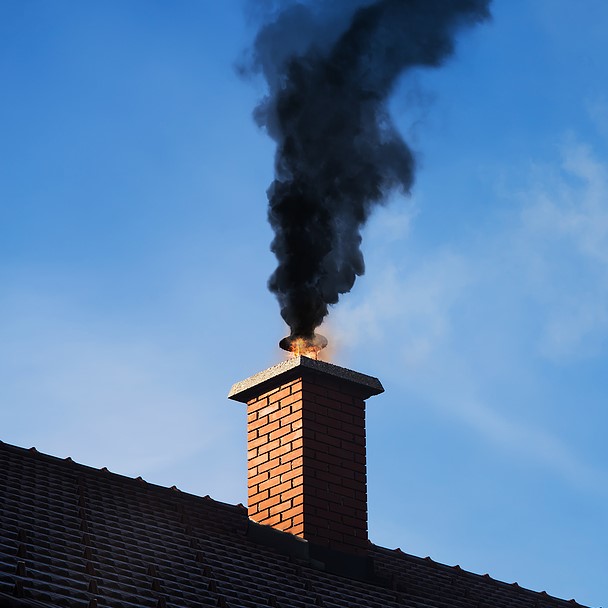 A clean and properly maintained chimney should never have fiery sparks popping out of its top. Unfortunately, not all chimneys are clean and maintained. Fluesbrothers Chimney & Fireplace offers the following advice should you experience this potentially dangerous problem.
A clean and properly maintained chimney should never have fiery sparks popping out of its top. Unfortunately, not all chimneys are clean and maintained. Fluesbrothers Chimney & Fireplace offers the following advice should you experience this potentially dangerous problem.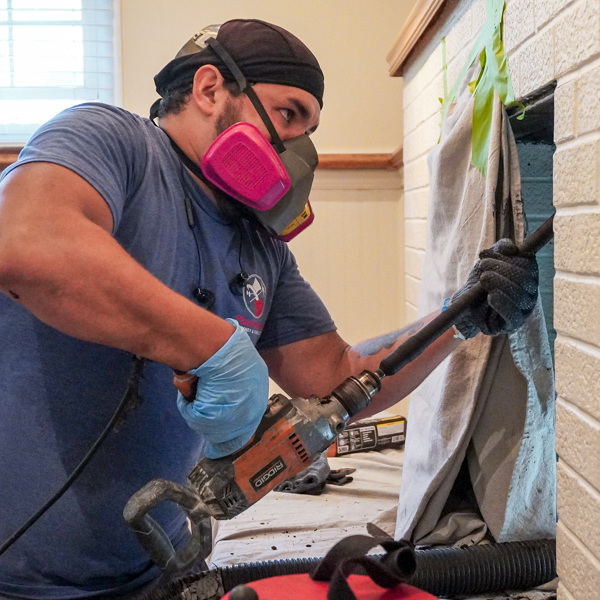 Chimney technicians are trained in the use of a variety of industry-grade tools to safely and effectively remove creosote from your chimney flue. An annual chimney sweep is an excellent step toward preventing chimney fires.
Chimney technicians are trained in the use of a variety of industry-grade tools to safely and effectively remove creosote from your chimney flue. An annual chimney sweep is an excellent step toward preventing chimney fires. First, are sparks coming out of your chimney a problem?
First, are sparks coming out of your chimney a problem? Ongoing chimney maintenance to prevent sparks and embers
Ongoing chimney maintenance to prevent sparks and embers
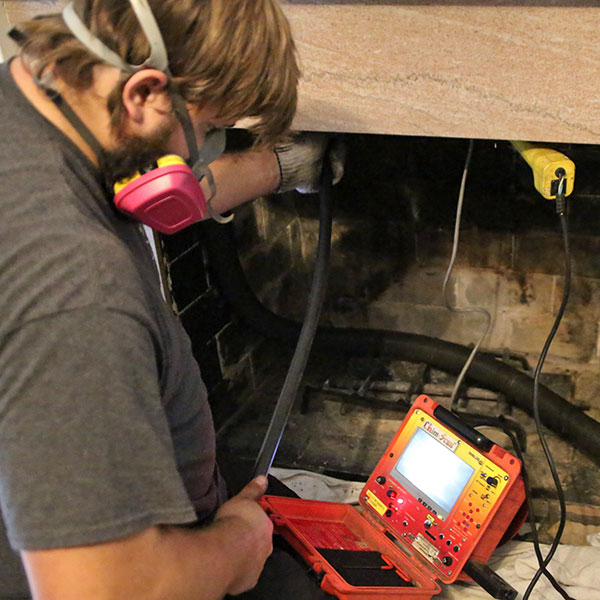 If smoke is backing up into your home, your biggest concern is the carbon monoxide that smoke carries. Carbon monoxide is invisible and odorless, but it is known to be potentially fatal to people and pets when inhaled.
If smoke is backing up into your home, your biggest concern is the carbon monoxide that smoke carries. Carbon monoxide is invisible and odorless, but it is known to be potentially fatal to people and pets when inhaled.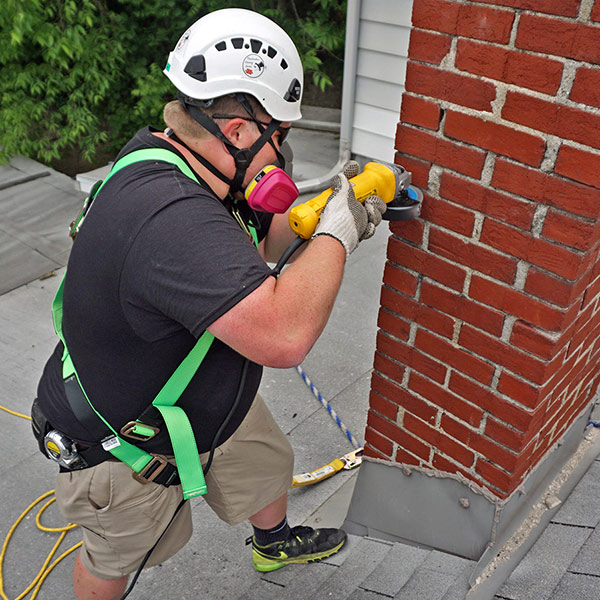 Even the smallest cracks in your chimney bricks can lead to big trouble down the line. The same with mortar that’s crumbling. When water penetrates masonry, it can begin a cycle of deterioration. If the moisture freezes in cold weather, it will expand and cause more masonry damage.
Even the smallest cracks in your chimney bricks can lead to big trouble down the line. The same with mortar that’s crumbling. When water penetrates masonry, it can begin a cycle of deterioration. If the moisture freezes in cold weather, it will expand and cause more masonry damage.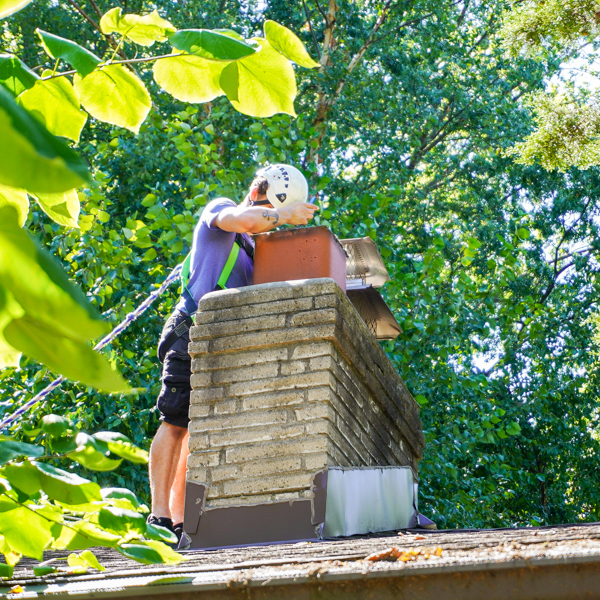 What a chimney inspector does
What a chimney inspector does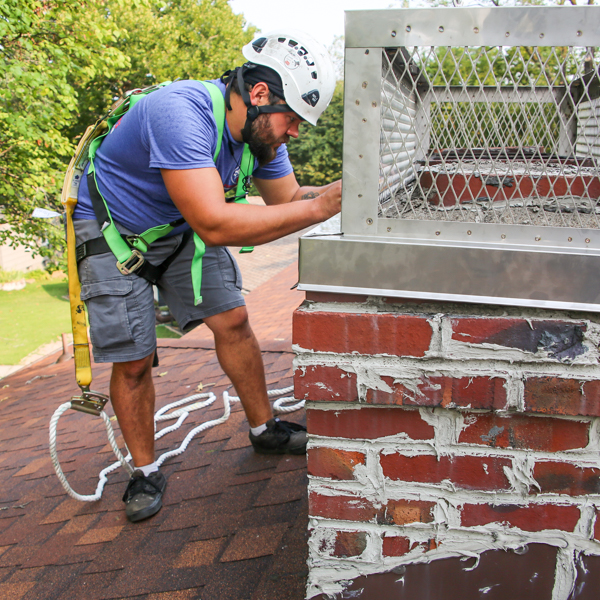 Chimney cap, crown and flashing damage
Chimney cap, crown and flashing damage Tip #1 – Schedule A Chimney Inspection
Tip #1 – Schedule A Chimney Inspection
 The purpose of a chimney is to draw smoke and toxic gases up and out of a home. If the flue becomes blocked by animal nests, residue from smoke (called creosote), broken masonry, dead animals, etc. The smoke and toxic fumes have nowhere to go except back into your home. This can lead to carbon monoxide poisoning. Carbon monoxide is an invisible and odorless gas so you won’t notice it until it is too late. Symptoms of carbon monoxide poisoning are confusion, headaches, difficulty breathing, nausea, loss of consciousness and even death.
The purpose of a chimney is to draw smoke and toxic gases up and out of a home. If the flue becomes blocked by animal nests, residue from smoke (called creosote), broken masonry, dead animals, etc. The smoke and toxic fumes have nowhere to go except back into your home. This can lead to carbon monoxide poisoning. Carbon monoxide is an invisible and odorless gas so you won’t notice it until it is too late. Symptoms of carbon monoxide poisoning are confusion, headaches, difficulty breathing, nausea, loss of consciousness and even death. Masonry can become cracked for a variety of reasons. The first is the changing weather, over time the brickwork will begin to crack and even crumble due to the cycle of freezing and thawing. Heavy winds and water damage can lead to large cracks.
Masonry can become cracked for a variety of reasons. The first is the changing weather, over time the brickwork will begin to crack and even crumble due to the cycle of freezing and thawing. Heavy winds and water damage can lead to large cracks. Put away your knickknacks.
Put away your knickknacks. Our chimney sweeps are
Our chimney sweeps are  The crown of a chimney is just as important as it sounds. The crown surrounds the top of the chimney and serves as an umbrella for the whole structure. Besides being a finishing touch, the crown protects your chimney from the eroding effects of water. A
The crown of a chimney is just as important as it sounds. The crown surrounds the top of the chimney and serves as an umbrella for the whole structure. Besides being a finishing touch, the crown protects your chimney from the eroding effects of water. A  This can point to excess age or water damage. Though bricks are notoriously durable they can deteriorate over time, leaving your chimney susceptible to all the hazards we mentioned, animals, water damage and eventual collapse.
This can point to excess age or water damage. Though bricks are notoriously durable they can deteriorate over time, leaving your chimney susceptible to all the hazards we mentioned, animals, water damage and eventual collapse. The weather is getting cooler and the Christmas decorations are out. There’s no doubt that firewood will be chopped for lighting up the fireplace this season. The most important thing is to have a
The weather is getting cooler and the Christmas decorations are out. There’s no doubt that firewood will be chopped for lighting up the fireplace this season. The most important thing is to have a  Many fires occur because of ashes being dumped in dangerous ways. The safest way to get rid of ashes is to make sure they are properly cooled and then placed in a fireproof container with a lid. The best practice is to keep this container away from anything flammable including wood or linen and at a distance of at least 10 feet from your home or other buildings.
Many fires occur because of ashes being dumped in dangerous ways. The safest way to get rid of ashes is to make sure they are properly cooled and then placed in a fireproof container with a lid. The best practice is to keep this container away from anything flammable including wood or linen and at a distance of at least 10 feet from your home or other buildings.